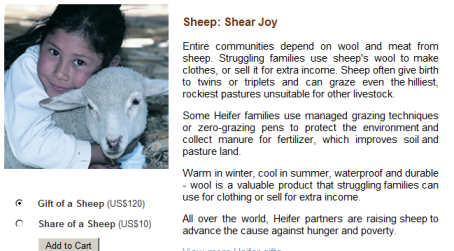We constantly emphasize the huge amount of money that is given by individuals. However, the figures we usually point to refer to all giving; people often, correctly, point out to us that many individual gifts are made to support churches, alma maters, public goods, etc., rather than to help those in need.
A study by Google.org and the Center for Philanthropy at Indiana University provides some analysis on exactly this point. It uses survey data to examine how much of individuals’ giving is actually intended to help those in need. It estimates both the amount given directly to humanitarian organizations (3rd column) and the amount given “indirectly” to help those in need – for example, donations to churches that use some of their funds for humanitarian programs (4th column). The summary table is below, taken from page 29.
Giving focused on the needs of the poor (2005; billions of dollars)
| Household income | Total giving | To help meet basic needs | Estimates from other subsectors | Sum of two types of giving focused on the needs of the poor | Percentage of total giving focused on the needs of the poor from this income group |
|---|---|---|---|---|---|
| <$100,000 | $89.92 | $9.34 | $22.63 | $31.97 | 41.4% |
| $100,000 to $200,000 | $19.88 | $2.46 | $4.99 | $7.45 | 9.6% |
| $200,000 to $1 million | $91.48 | $5.30 | $21.29 | $26.59 | 34.4% |
| $1 million or more | $51.27 | $1.93 | $9.35 | $11.28 | 14.6% |
| Total | $252.55 | $19.03 | $58.26 | $77.29 | 100.0% |
Note that individuals making less than $1 million per year account for ~$66 billion of giving focused on the needs of the poor, $17 billion of which is given directly to relevant organizations. These numbers are smaller than the headline number of $223 billion, but they’re still huge (and still dwarf the giving of Gates and other foundations).
(This study has been around for a while and we cited it in our original business plan, but we’ve never made this point directly on our website.)

 One of the questions we struggle with a lot is the question of what impact a donation has – i.e., what happens because of your donation that wouldn’t have happened otherwise? In other words, what do you get for your dollar?
One of the questions we struggle with a lot is the question of what impact a donation has – i.e., what happens because of your donation that wouldn’t have happened otherwise? In other words, what do you get for your dollar?